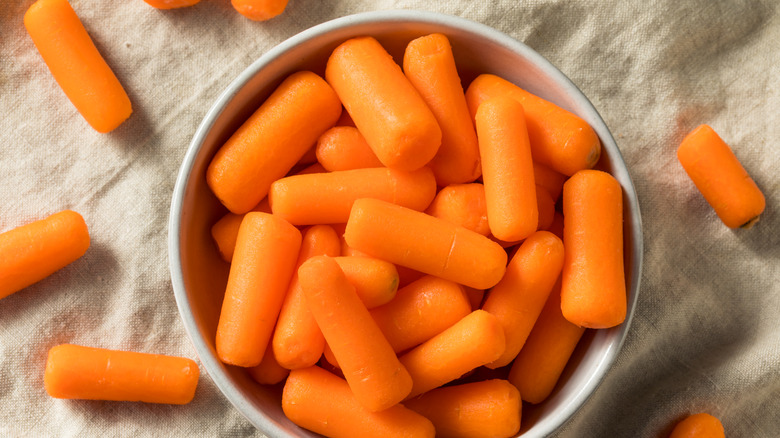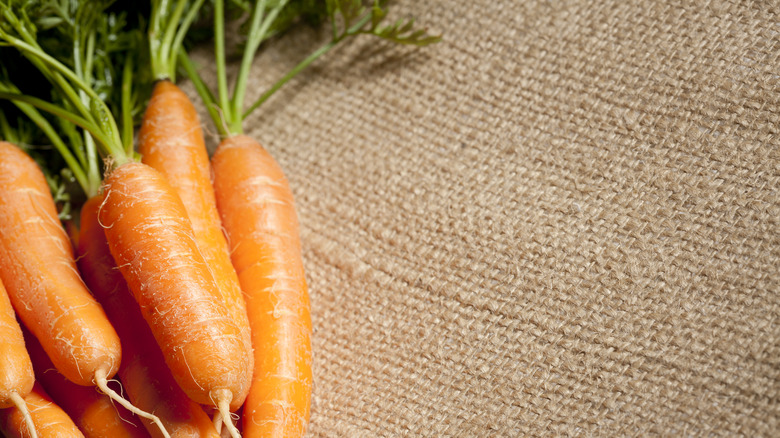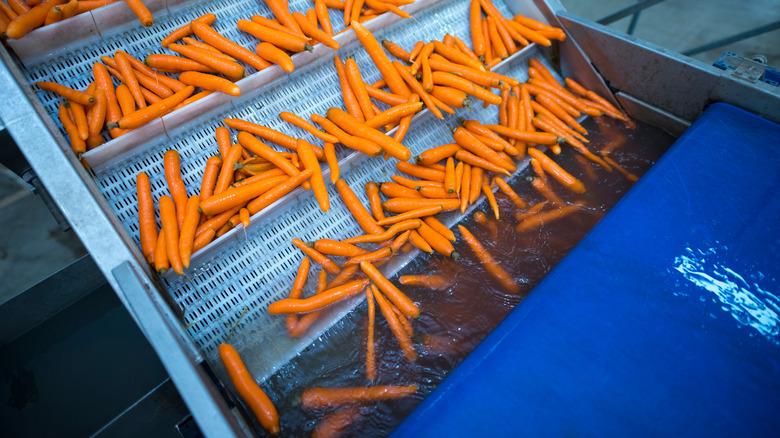The Myth You Should Stop Believing About Baby Carrots
Crisp, crunchy, and slightly sweet, baby carrots are some of the most ubiquitous and versatile members of the vegetable family, particularly in the United States, where they were first conceived. Their mild flavor and sturdy build make them the perfect vessel for hummus, ranch, and other savory dips. They can also be cooked like regular carrots, taking on flavors like baked buffalo or a sweet honey glaze for an effortless side dish. What's more, they come in a size and shape that even the smallest toddler hands can grip, making them a classic gateway vegetable for young children.
Despite their popularity, many consumers seem to misunderstand exactly what they are. With baby cucumbers, baby potatoes, and baby corn all naturally sprouting from the ground in their miniature form, it is fair to assume that baby carrots do the same. However, this assumption is based on a myth that has fooled many. The truth is, baby carrots are actually pieces of regular-sized carrots. After select full-grown carrots (stem, skin, and all) are harvested, they are machine-cut into a baby carrot shape. Though most people call them "baby carrots," producers more appropriately call them "baby-cut carrots."
Baby carrots are made, not grown
Baby carrots first entered the food scene in 1986 as an economical idea; California carrot farmer Mike Yurosek noticed that buyers and distributors had their sights set on large, plump, vibrantly-colored carrots, like the one Bugs Bunny always seems to have on hand. The problem was that, as with most things left to the devices of nature, no two carrots come out of the ground exactly the same. Some carrots grew lopsided, small, or "imperfect" in some shape or form.
Instead of sending these reject carrots to the landfill, Yurosek came up with an idea to eliminate food waste and maximize the sales of his crop. He conceptualized the now well-known 2-inch, digit shape so that even the runt of the carrot litter, so to speak, could be put to use. The baby-cut carrots would come pre-peeled, pre-washed, and pre-cut into small, snack-able pieces, making them a convenient choice for folks of all ages.
Where baby carrots stand today
Yurosek's idea for baby carrots became in instant success among consumers, and today, they make up 70% of all the raw carrots sold in the U.S. With their immense popularity, it is no wonder consumers may mentally separate baby carrots from full-sized carrots, believing they come from a separate crop.
The baby carrot story isn't all upbeat, though. Today, the standard production process involves sanitization, which involves rinsing the carrots in a diluted chlorine solution. Though they are thoroughly washed after, and any residual solution is considered within safe limits for consumption, this practice has caused concern for many consumers. Additionally, the extra production steps make baby carrots slightly more expensive and less flavorful than regular carrots, urging some consumers to think twice before buying them.
The convenience of baby carrots comes at a cost, but that cost continues to be worth it for many. By the looks of their continuous popularity among consumers, baby carrots are not going anywhere anytime soon.


